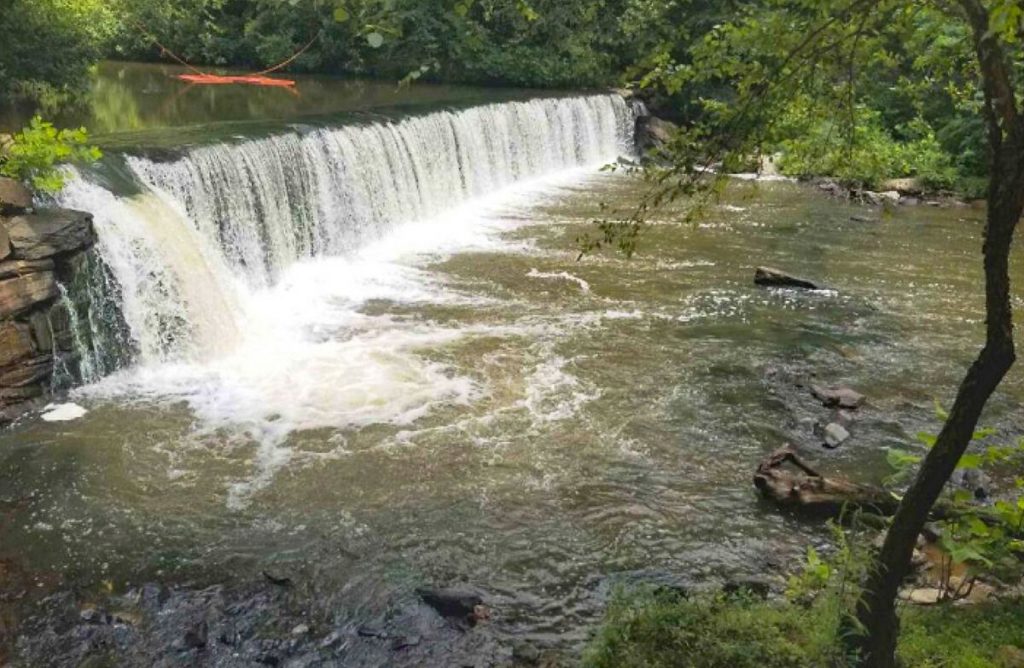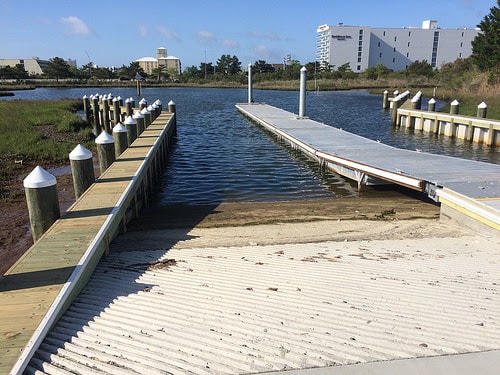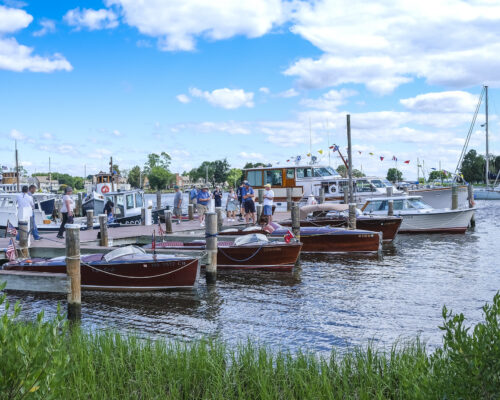By Jeremy Cox, Bay Journal News Service
Across the Chesapeake Bay watershed, dams are being demolished to restore fish habitat and remove potential threats to the safety of swimmers. But the private owner of a dam near Charlottesville, VA, is receiving mostly praise for doing the opposite.
The Jefferson Mill dam appears destined to remain where it has stood for more than 200 years on the Hardware River, about 15 miles upstream from where it joins the James River, a major Chesapeake Bay tributary.
Let It Go LLC, the dam’s owner, plans to transform the historic mill building into a private residence and modernize the dam’s hydroelectric system to power the home.
What has drawn positive reception from local officials and environmentalists is the extent to which the company proposes to refit the dam to improve fish passage.
Currently, the dam obstructs all upstream migration. The renovation will add a peg-lined ramp for American eels and sea lampreys to wriggle their way past the dam and continue upstream. Meanwhile, the company is sacrificing energy capacity to install turbines that are safer for the creatures that get sucked into it.
“I think they’re making it better than the existing dam,” said Bill Fritz, development process manager for Albemarle County. At a public meeting earlier this summer, the veteran official called it “by far the most extensive and complete application in the 30-plus years I’ve worked for the county.”
Albemarle’s Planning Commission and Board of Supervisors have each signed off on the changes. State and federal permission is pending.
Who is behind Let It Go LLC? It isn’t exactly clear. But clues suggest a possible famous connection.
According to the company’s registration with the State Corporation Commission, its headquarters shares the same address as Blenheim Vineyards, a winery just outside Charlottesville owned by musician Dave Matthews and his family. Property records for the dam site and surrounding parcels also owned by Let It Go list the contact person as Aaron Van Duyne III, Matthews’ longtime business manager.
Context also points in Matthews’ direction. The two-time Grammy winner and perennial top concert draw has deep roots in Charlottesville. It’s where he founded the Dave Matthews Band and where his main charity, the Bama Works Fund, is based.
And Matthews is no stranger to environmental causes. Over the years, his band has planted trees to offset the carbon emissions of touring, committing to 1 million for its 2021 tour alone. In 2019, the United Nations’ environmental arm designated the group as a goodwill ambassador, citing its composting, recycling and carbon-removal efforts while on tour.
But no one publicly connected with the land or the project would comment on the owner’s identity for this report.
Under the 2014 Chesapeake Bay Watershed Agreement, the federal government, six Bay states and the District of Columbia set a goal of reopening at least 1,000 miles of streams and rivers to migratory fish by 2025. Having surpassed that goal in 2016, the entities involved have since adjusted it to adding 132 miles every two years.
After some initial success, the number of added stream miles has been trending downward in recent years. Experts attribute the decline to a dwindling supply of what they call low-hanging fruit: publicly owned dams that are relatively easy to remove. Most of what remains are private dams whose owners are disinclined to have them taken down.
Jessica Penrod, project manager with Natel Energy, the California-based hydropower developer handling the Jefferson Mill project, said that removing the dam would be of little help to migrating fish because there are several more dams blocking their passage downstream, including on the James. Dam removal is the gold standard, but constructing a fish passage — a lift, ladder, ramp or some other type of upstream egress — is considered an acceptable alternative by Bay restoration advocates.
The Jefferson Mill dam is no Hoover Dam. Built in 1820 by one of Thomas Jefferson’s relatives and named after the former president, the masonry dam rises 9 feet from the bottom of the river and spans its 140-foot width. The mill adjacent to the dam ground wheat into flour, powered by a water wheel and later by three small turbines. It went out of business in 1945, but the four-story building is one of the few survivors of its kind in the region from that era.
“This dam’s actually totally amazing,” said Joseph Head, a civil engineer with Natel Energy. “These guys that built this dam did it by hand 200 years ago with just rock and mortar, and it’s still there. If we’re messing with this dam, we have a standard to meet here.”
No changes are planned for the dam itself. The project will divert water into a renovated “water room,” where the new turbine will be housed. The facility will produce about 20 kilowatts of electricity for the mill-turned-home, with any excess energy sent to the power grid. The other major addition will be the fish passage, consisting of a 2-foot-wide, 25-foot-long ramp along the riverbank.
At the direction of state and federal wildlife agencies, Natel’s Penrod said the company will monitor the site for at least a year before building the ramp, so it can be placed where eels and lamprey tend to go when they encounter the dam. Monitoring will be required afterward to make sure it’s working. If it’s not, Natel and the property’s owners may have to tweak it.
Karen Firehock, a planning commission member and the founder of a nonprofit that promotes green infrastructure, said she would prefer no dam to be there at all, historic or not. But she nevertheless joined the other commissioners in recommending approval of the project, saying the fish passage and renewable energy aspect represented a “net benefit.”




